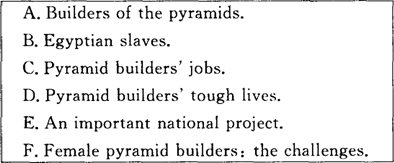Several years ago I visited Egypt. After leaving Cairo and traveling through the hot deser
t sands I eventually found myself standing in the shadow of the Great Pyramid of Cheops—one of the mighty wonders of the ancient world. Entering a small doorway in the pyramid's base I climbed upwards towards the center. And there I was at the heart of this great stone mountain in the burial chamber of a Pharaoh.
As I stood there, I reflected on where I was. Was I in the middle of the tomb of a king, the most powerful ruler the world has ever known? Or was I at the center of something much more mysterious? A monument of such mathematical accuracy and advanced architecture that the modern world can only marvel at? A magical shape built by a civilization whose knowledge and wisdom have been lost today?
I was silent in wonderment. The Great Pyramid at Giza, built for the Pharaoh Cheops, is large, to say the least. It is built from 2300000 blocks of stone, each weighing 15 tons, and as Napoleon's scientists calculated, it contains enough stone to build a huge wall all around France. At the time when it was completed (over 5,000 years ago), it must have been magnificent-covered in white limestone and topped by a cap of solid gold. Yet ever today it is a marvel—and even more than that, a mystery. How did the Egyptians (who still hadn't discovered the wheel) build such a huge monument; each stone put together with such precision that architects today would have difficulty copying? How were these huge stones cut, carried and lifted into place, when the people only had simple wooden rollers, levers and primitive tools?
But perhaps these are the least of the Great Pyramid's mysteries. For it is quite possible that this pyramid was not used as a tomb at all. In A.D. 800, when the Sultan of Baghdad, Al Mamud, finally managed to reach the central burial chamber of Cheops (after tunelling passed large stones that blocked the entrance), he found nothing! The chamber was empty. Unlike other tombs that possessed the kings' priceless treasures, this one was completely empty. Nothing was there.
Was the Great Pyramid something other than a tomb? In 1638 an Oxford professor measured the king's chamber and was shocked by its "exact" size. Even Sir Isaac Newton became interested in the pyramid's perfect shape. However, it was John Taylor, the editor of The Observer, whose studies brought about the most amazing discovery. He showed, quite clearly, by the measurements of the pyramid, that the early Egyptians must have known the value of pi. Amazingly, they were 4000 years ahead of their time.
The Pyramid of Cheops now became a great mystical symbol with strange magical powers. It has even been suggested recently that it was built with the help of aliens from outer space. A UFO landed and its occupants taught the Egyptians all their skills.
On a more realistic level, British astronomer Richard Proctor believed that the pyramid was a hut observation room for viewing the stars and calculating the movement of the heavens, Not only are the sides of the pyramid perfectly lined to the tour points the compass, but the passage to the king chamber is precisely in line with it Pole Star. It became, obvious that builders of the pyramid also knew that the World was round. They knew the exact itude of the Earth, the length of the Earth's orbit around the sun, the acceleration of gravity and the speed of light. Another idea is that this shape is a giant clock-its great shadow use for calculations on the sand. The Egyptians could keep a constant record of time and know easily the length each year. In fact the Czech engineer Karel Drbal was so interested in all he heard about the Great Pyramid that he built a small replica of it out of wood. He found a definite relationship between the shape of the space inside the pyramid and the physical, chemical and biological processes going on inside the space. Into his pyramid he
A.nothing
B.it full of treasure
C.the body of the Pharaoh
D.a terrible monster
 题目内容
(请给出正确答案)
题目内容
(请给出正确答案)
 答案
答案


























